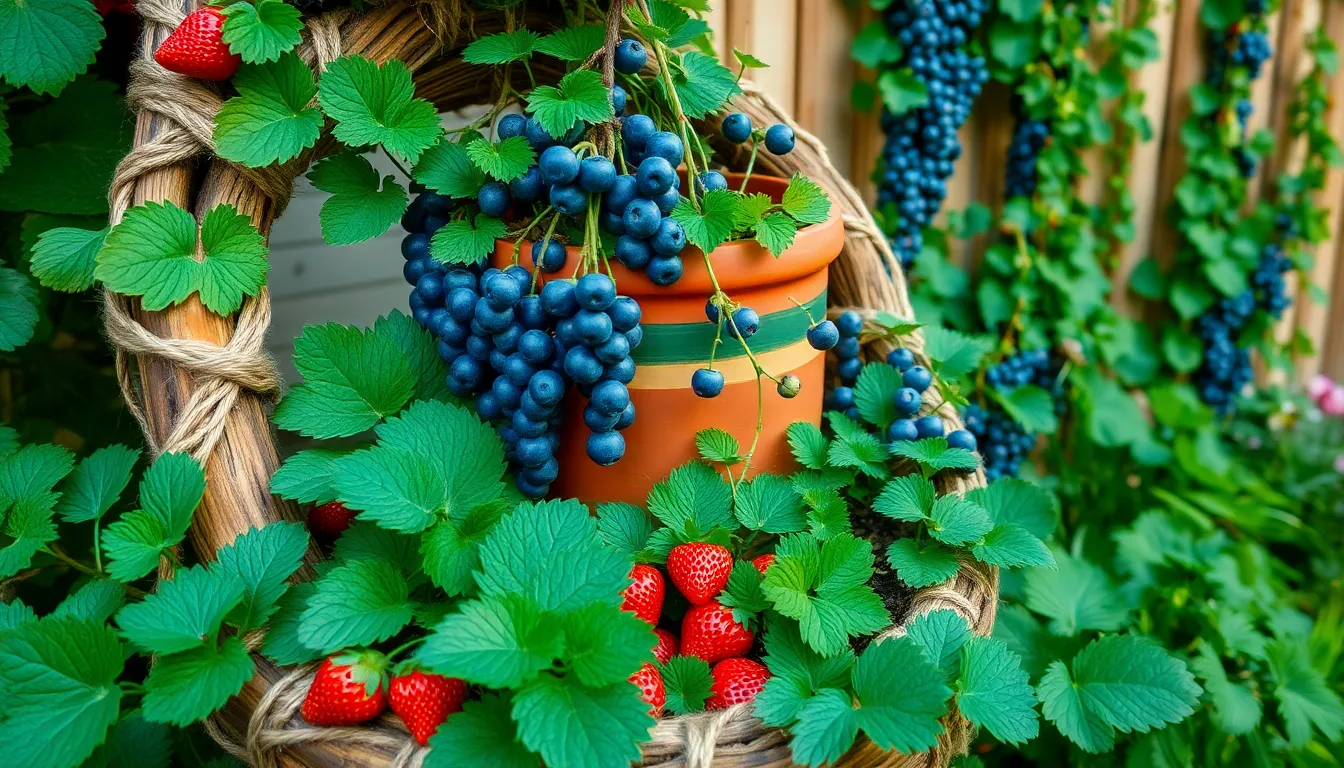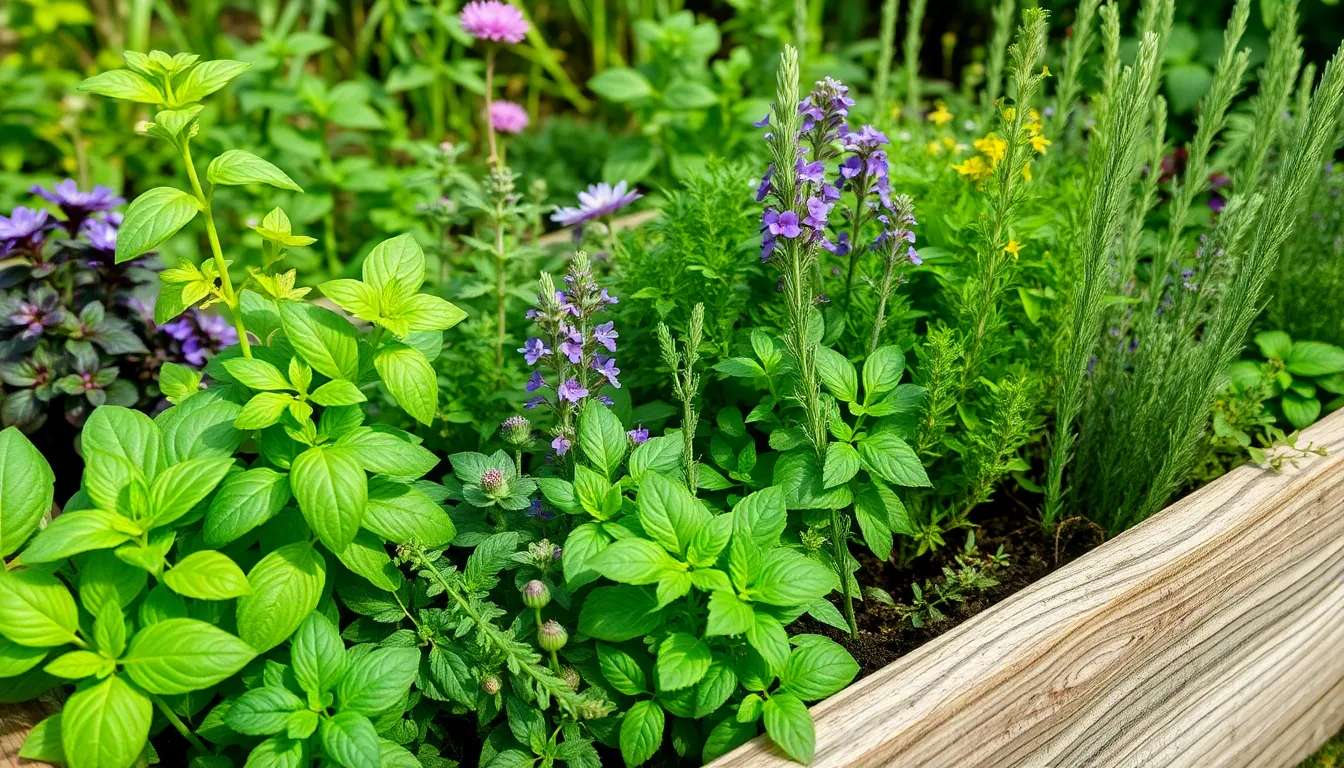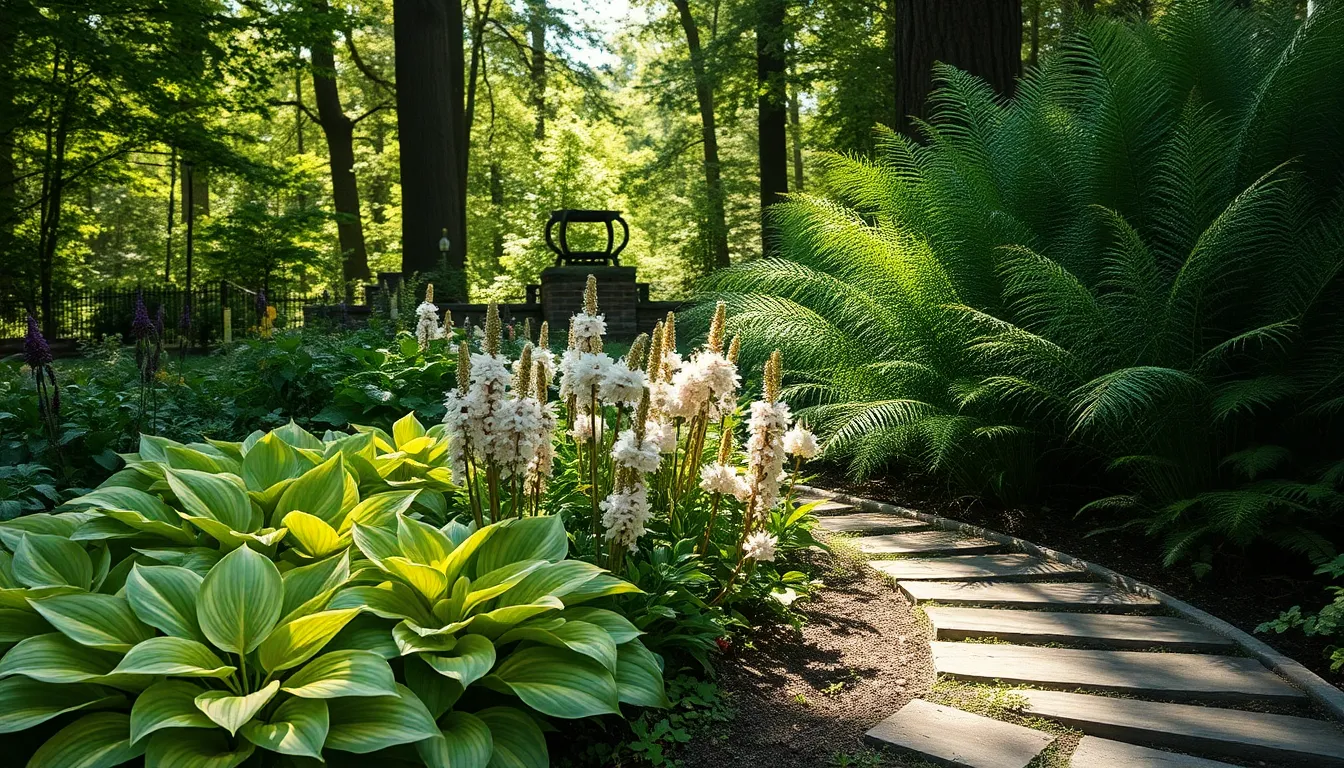There’s something uniquely rewarding about plucking fresh fruit straight from your own garden, a perfect blend of nature’s bounty and your nurturing touch. Whether you’re a novice gardener eager to start your first fruit garden or a seasoned green thumb looking to expand your orchard, cultivating fruit can be both a delicious and fulfilling endeavor.
In this article, we’ll explore 12 innovative inspirations to help you transform your outdoor space into a fruitful paradise. From vertical gardens that maximize small spaces to heirloom varieties that add a touch of history and flavor to your harvest, each idea is designed to excite and inspire.
The journey to a thriving fruit garden is filled with opportunities to learn and grow. You’ll discover practical tips, creative designs, and sustainable practices that not only enrich your gardening experience but also contribute to a healthier lifestyle.
Vertical Berry Planter Designs
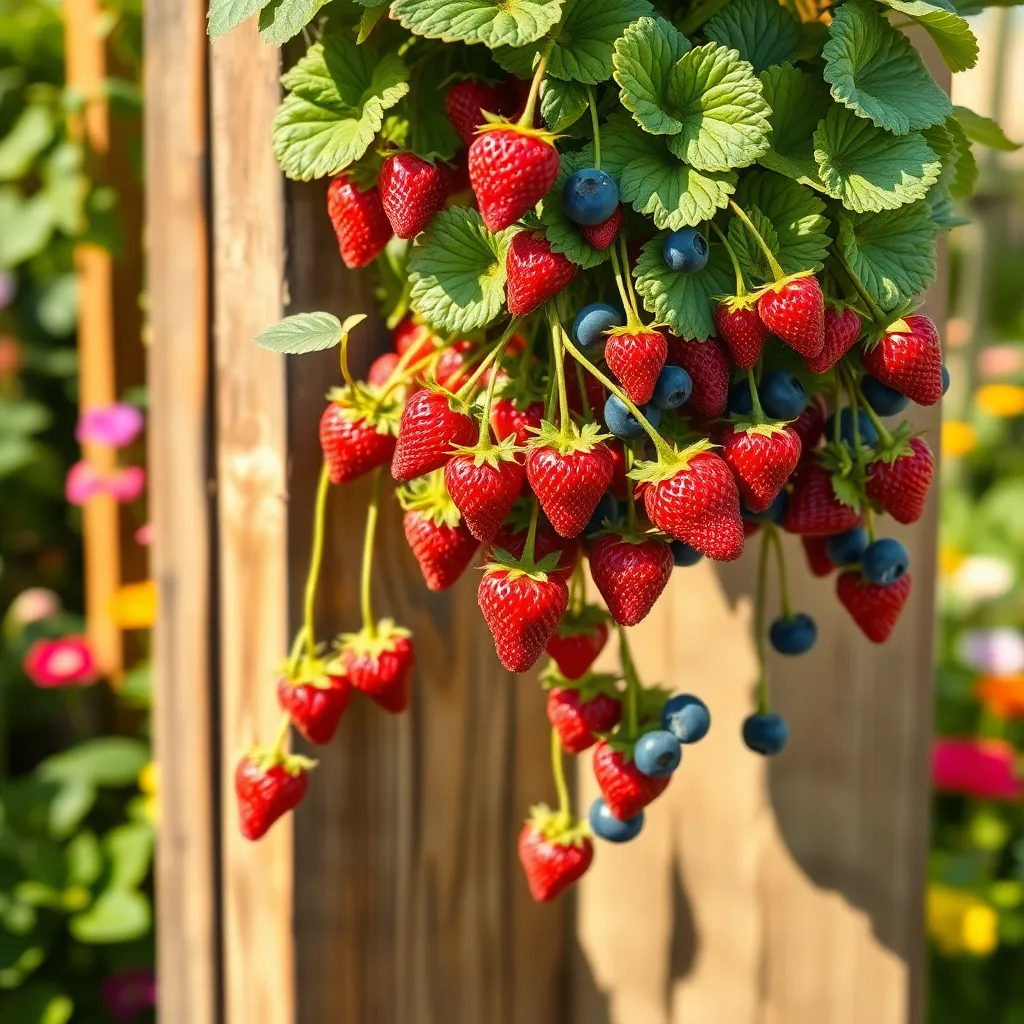
Creating a vertical berry planter is an excellent way to save space and maximize your fruit harvest. For starters, strawberries and raspberries are ideal candidates, as they thrive in vertical structures and require similar care.
Consider using stackable planters or a tiered system to accommodate different berry varieties. Ensure each layer has adequate drainage, and fill the planters with a rich, well-draining potting mix to support healthy root development.
Regular watering is crucial since vertical planters can dry out faster than traditional garden beds. Aim to keep the soil consistently moist but not waterlogged, adjusting your watering schedule based on weather conditions.
To provide the best growing conditions, place your vertical berry planter in a location that receives at least six to eight hours of sunlight per day. If you live in a hot climate, consider some afternoon shade to protect your plants from excessive heat.
- Start with young berry plants or runners for quicker establishment.
- Fertilize with a balanced, slow-release fertilizer every four to six weeks during the growing season.
- Prune regularly to encourage air circulation and remove any dead or diseased growth.
- Be vigilant for pests such as aphids and spider mites, treating with insecticidal soap if necessary.
Dwarf Fruit Trees for Patios
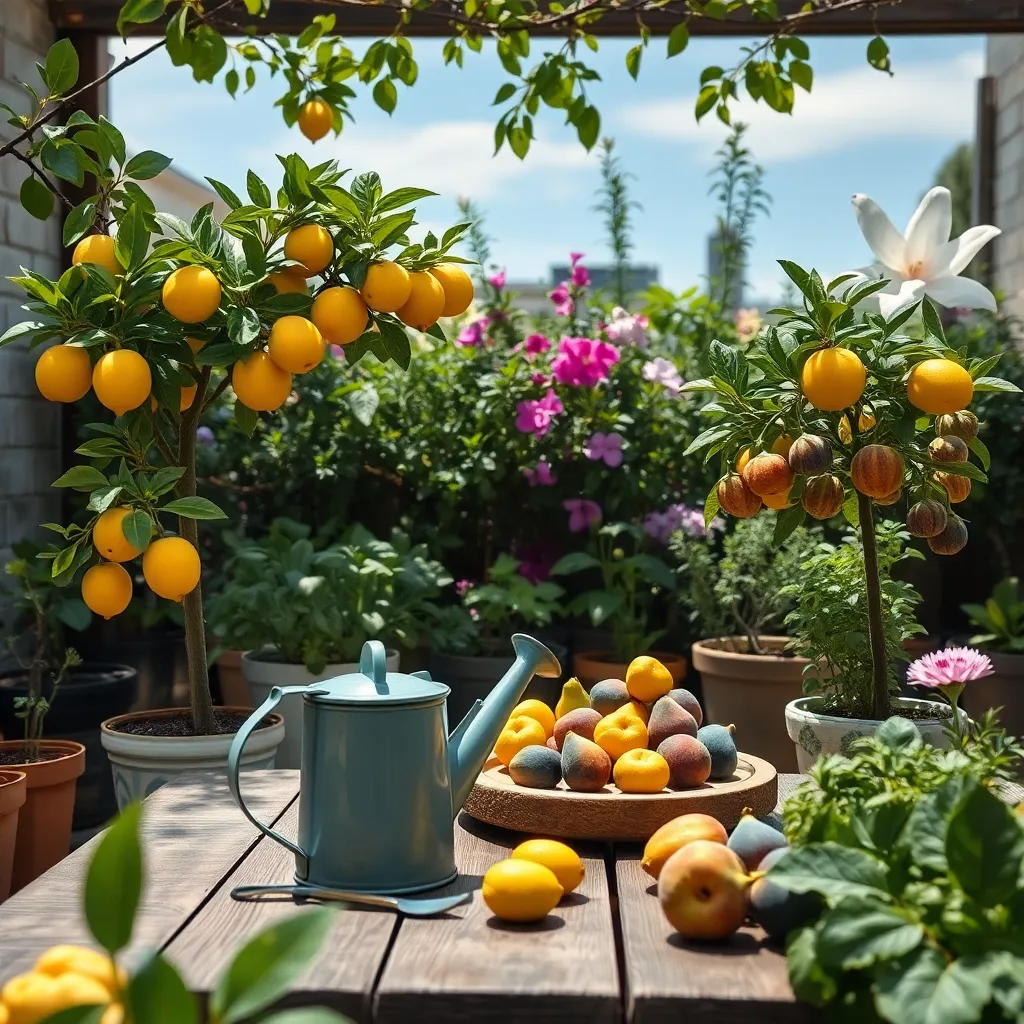
Dwarf fruit trees are a fantastic option for patio gardeners who want to enjoy fresh fruit without a large garden space. These compact trees are bred to stay small, making them ideal for container growing, and can often produce as much fruit as their full-sized counterparts.
Start by choosing the right container; it should be at least 18 inches in diameter and have good drainage holes. Use a high-quality potting mix, enriched with organic matter, to ensure the tree receives adequate nutrients and retains moisture effectively.
Position your dwarf fruit tree in a location where it will receive at least six hours of sunlight per day, as most fruit trees thrive in full sun. Regular watering is crucial; keep the soil consistently moist but not waterlogged, particularly during the growing season.
For advanced care, consider using a balanced, slow-release fertilizer in early spring to promote healthy growth and fruit production. Prune your tree annually to maintain its shape and remove any dead or diseased wood, which will encourage a more productive canopy.
Gardening enthusiasts can experiment with different varieties like dwarf apples, peaches, or citrus to diversify their patio orchard. Remember to check your specific variety’s needs, as some may require particular pollinators or have specific climate preferences.
Exotic Fruits in Small Spaces
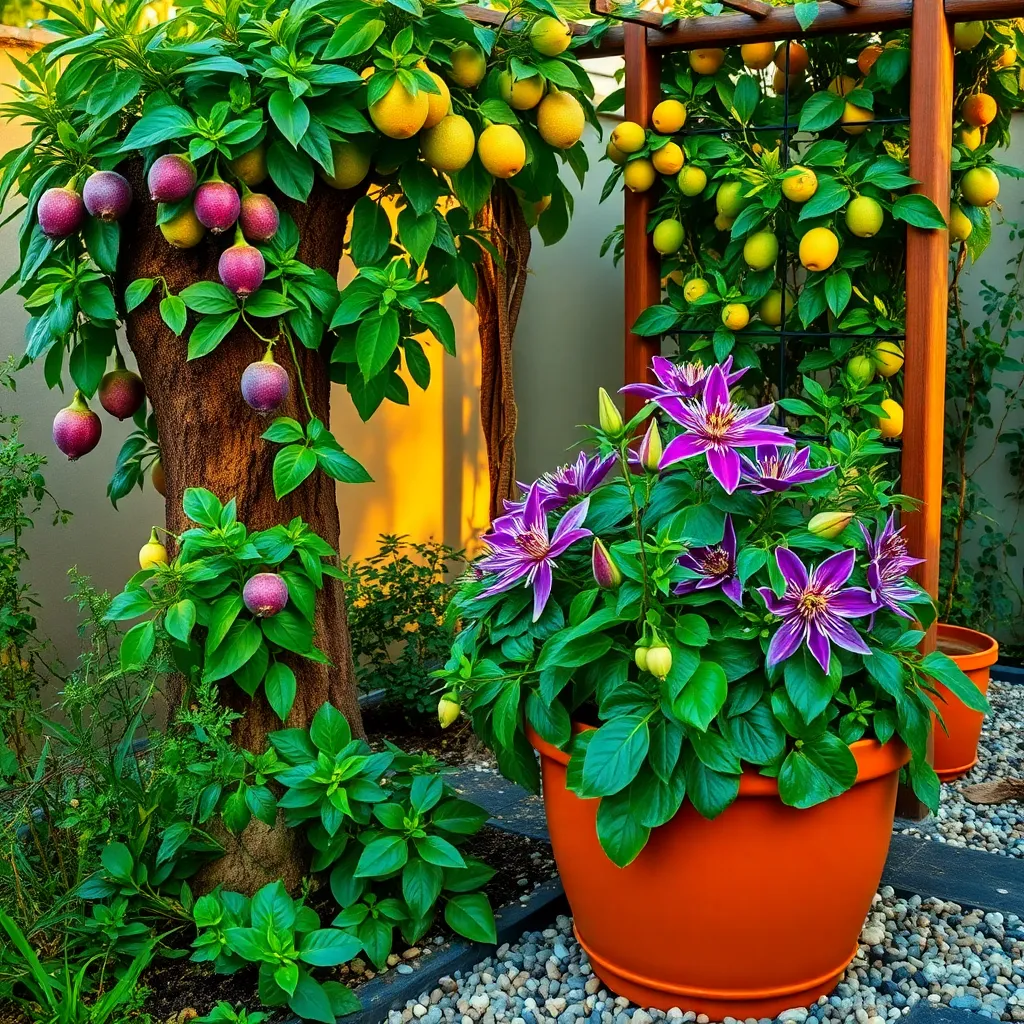
Growing exotic fruits in small spaces is both a rewarding and achievable endeavor. Begin with compact varieties like pineapple guava and kumquats, which thrive in containers on balconies or patios.
Ensure your chosen varieties receive adequate sunlight by placing them in spots with at least six hours of direct sunlight each day. A well-draining potting mix, enriched with organic matter, will promote healthy root development.
Watering is crucial, but overwatering can be detrimental. Keep the soil consistently moist but not soggy, and reduce watering frequency during the dormant winter months.
To maintain plant health and encourage fruiting, incorporate a balanced fertilizer every four to six weeks during the growing season. For an advanced tip, consider hand-pollinating flowers to increase fruit yield, especially in indoor or sheltered environments.
Container Gardening for Citrus
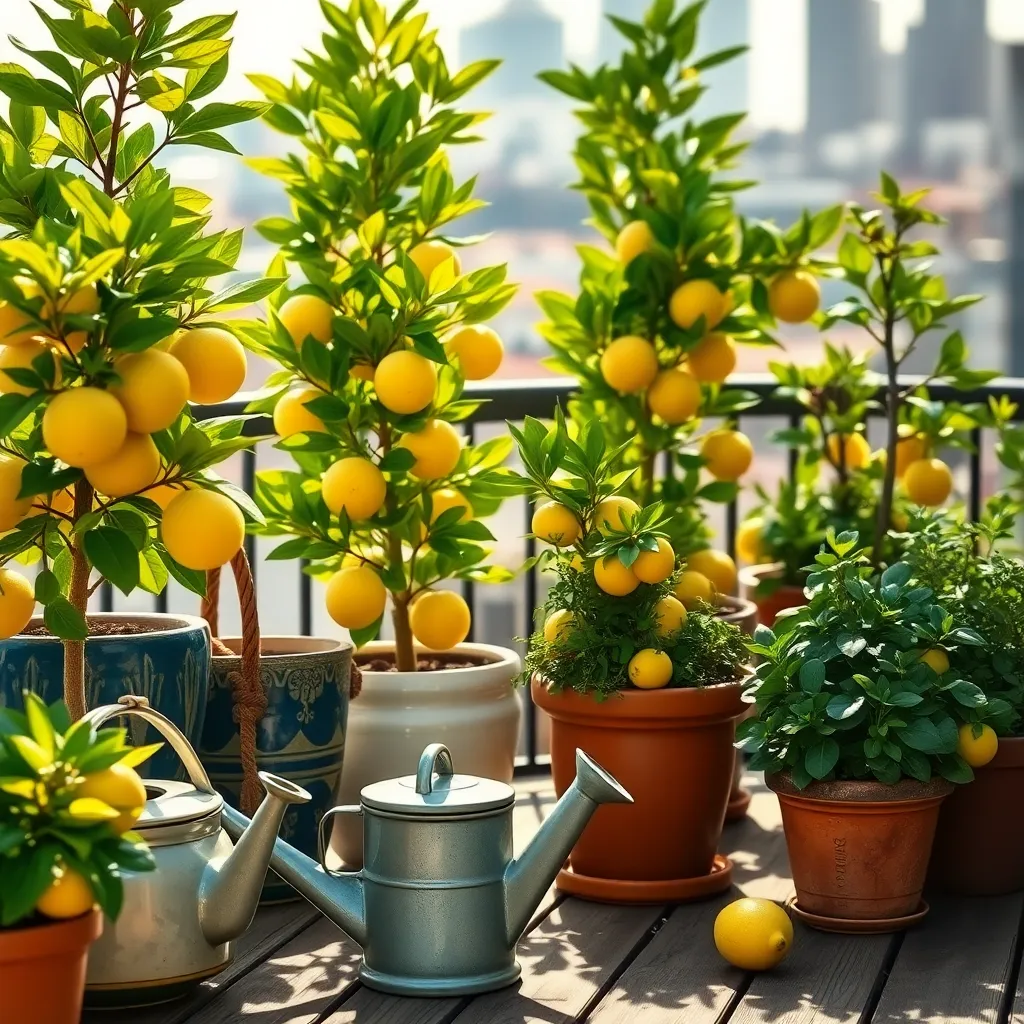
Container gardening for citrus is a fantastic way to enjoy fresh fruit even if you have limited space. Begin by selecting a large pot with drainage holes, as citrus trees need room for their roots and excellent drainage.
When it comes to soil, use a high-quality potting mix specifically formulated for citrus or other fruiting trees. Ensure the soil remains slightly acidic for optimal growth, aiming for a pH level between 6.0 and 7.0.
Place your container in a location that receives at least six to eight hours of full sunlight each day. Regular watering is crucial; water the tree thoroughly when the top inch of soil feels dry, but avoid overwatering as this can lead to root rot.
Fertilize your citrus tree with a balanced, slow-release fertilizer every three months to provide essential nutrients. Pruning is important to maintain the tree’s shape and remove any dead or overcrowded branches, promoting better airflow and growth.
For more advanced care, consider using a humidity tray under your container to enhance the tree’s microclimate. If you live in a colder region, be prepared to bring your citrus tree indoors during winter months to protect it from frost.
Trellising Techniques for Vines
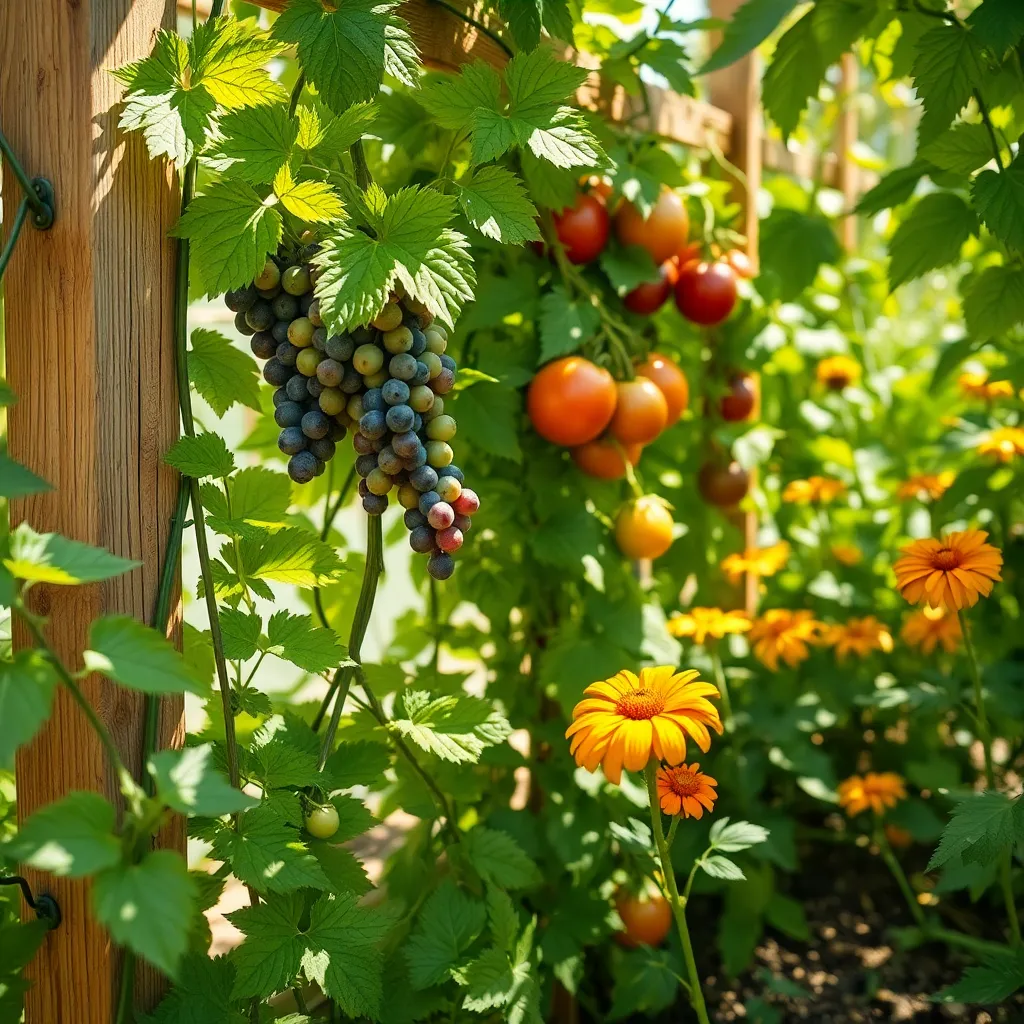
To transform your fruit garden with vine plants, trellising is an essential technique that provides both structure and support. Trellising increases airflow around the plants, which helps prevent disease and promotes healthier growth.
Beginner gardeners can start with simple structures like bamboo stakes or wire fencing, which are easy to install and adjust as needed. For more advanced setups, consider using heavy-duty materials such as wooden frames or metal grids, which can support heavier fruit-bearing vines like grapes or kiwis.
Ensure that your trellis is placed in an area that receives plenty of sunlight, as most vine plants thrive in full sun. Regular pruning is crucial to prevent overcrowding and to channel the plant’s energy into fruit production rather than excessive foliage.
For optimal growth, vines should be trained and tied gently to the trellis using soft ties or garden clips. This will guide the vines as they grow and help them maintain a strong and upright posture, maximizing fruit exposure to sunlight.
Companion Planting with Fruits
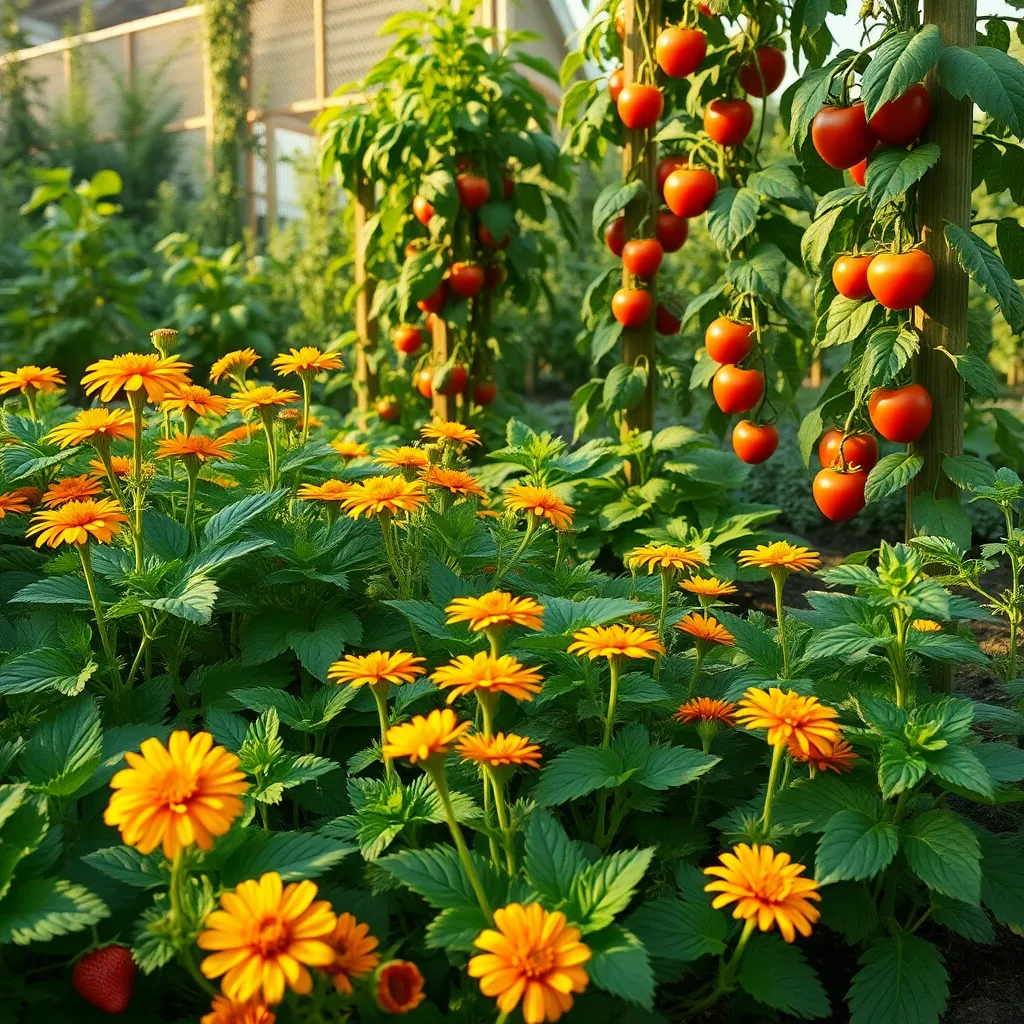
Companion planting with fruits is a strategic way to enhance your garden’s productivity and health. By planting mutually beneficial crops together, you can improve soil fertility, attract pollinators, and deter pests naturally.
For instance, strawberries thrive when planted with borage, which attracts pollinators and repels pest insects. Consider planting marigolds near your fruit trees to help suppress nematodes and enhance the growth of nearby plants.
Incorporating herbs like basil and mint around fruiting plants such as tomatoes and peppers can improve flavor and deter unwanted insects. Ensure these herbs are planted in well-drained soil and receive at least six hours of sunlight daily for optimal growth.
To maximize the benefits of companion planting, regularly rotate your crops and replenish the soil with organic matter. This practice not only maintains soil health but also reduces the risk of disease buildup and nutrient depletion over time.
Creating a Pollinator Paradise

Transforming your garden into a pollinator paradise is an inspiring way to boost fruit production while supporting essential ecosystems. Start by selecting a variety of native flowering plants that bloom at different times throughout the growing season to provide continuous nectar and pollen.
Choose plants such as lavender, coneflower, and bee balm that are known to attract bees and butterflies. Additionally, consider planting herbs like thyme and mint around your fruit trees, as they can also draw in beneficial pollinators while adding flavor to your kitchen.
To ensure success, provide a diverse habitat with different heights and types of plants, which can accommodate various pollinators. Incorporate a mix of shrubs, perennials, and annuals to create layers, and leave some areas untidy, as bare soil and leaf litter can serve as nesting sites for solitary bees.
Water sources are crucial for pollinators, so add a shallow dish with pebbles or a small birdbath to your garden. Keep the water fresh by changing it regularly to prevent mosquitoes and ensure that pollinators have a safe place to drink.
Hydroponic Fruit Garden Setups
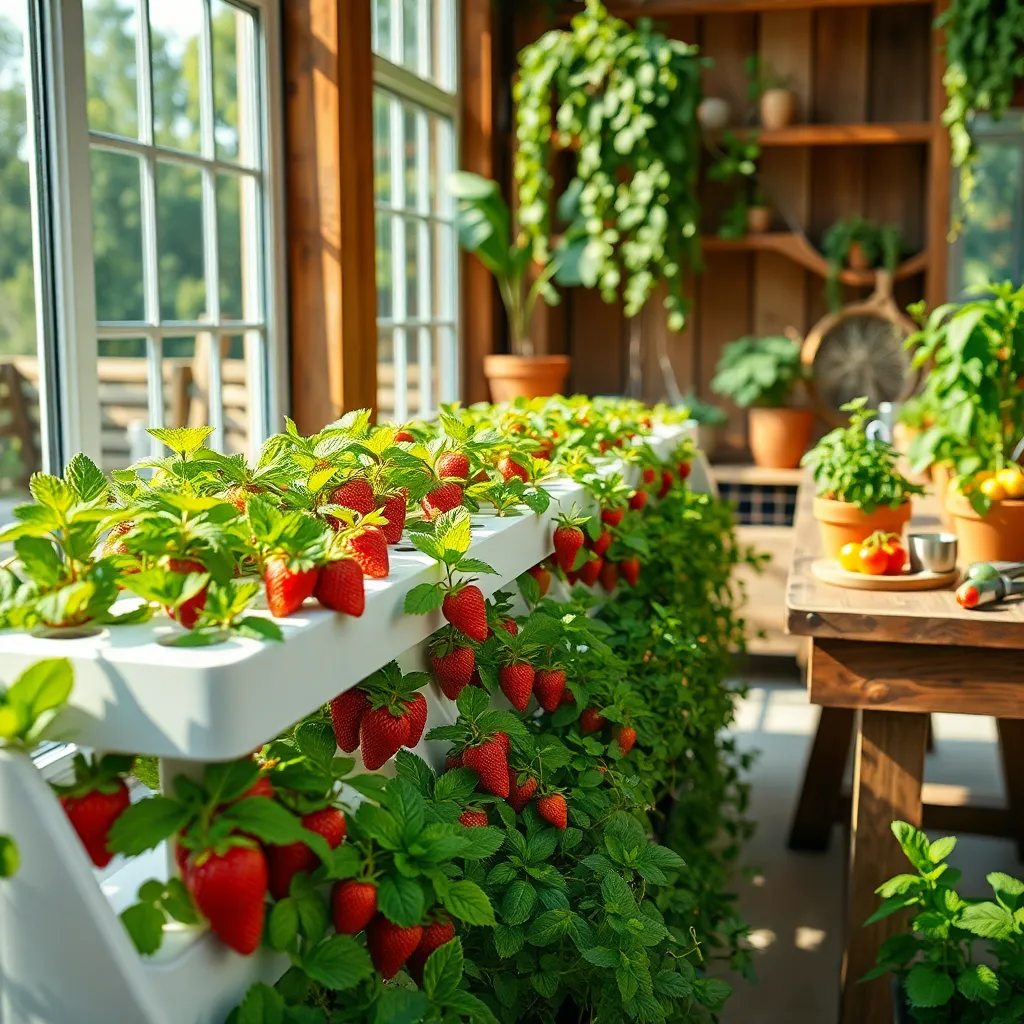
Hydroponic fruit gardens offer a space-efficient way to grow fresh produce indoors or in limited outdoor areas. By using nutrient-rich water instead of soil, you can control the growing environment precisely, ensuring optimal conditions for your fruit plants.
To start a hydroponic fruit garden, choose fruits like strawberries, tomatoes, or even small citrus trees, which adapt well to such systems. Ensure you have a reliable hydroponic setup, such as a Deep Water Culture or Nutrient Film Technique system, to support the specific needs of your chosen plants.
Lighting is crucial for hydroponic gardens, as fruits require ample light to thrive and produce. Invest in good quality LED grow lights that mimic natural sunlight and position them about 12-18 inches above the plants to promote healthy growth.
Maintain a consistent temperature and humidity level for your hydroponic fruit garden. Most fruit plants prefer temperatures around 70 to 80 degrees Fahrenheit and moderate humidity, which can be achieved with a small fan or humidifier if needed.
Low-Maintenance Orchard Alternatives

For those seeking low-maintenance orchard alternatives, consider planting fruit trees that require minimal intervention. Dwarf varieties such as dwarf apple or peach trees are perfect for smaller spaces and need less pruning than their full-sized counterparts.
Start by selecting a sunny spot with well-drained soil, as most fruit trees thrive with at least six hours of sunlight daily. To maintain optimal soil conditions, incorporate organic matter like compost or well-rotted manure into the planting hole.
Water newly planted trees regularly to establish a strong root system, especially during the first year. Once established, many low-maintenance fruit trees, such as figs and plums, are drought-tolerant and only need watering during prolonged dry spells.
For pest control, opt for natural solutions like introducing beneficial insects or using neem oil, which keeps your orchard organic and eco-friendly. With these practical tips, even novice gardeners can enjoy fresh, homegrown fruit without the extensive upkeep.
Year-Round Harvest Planning
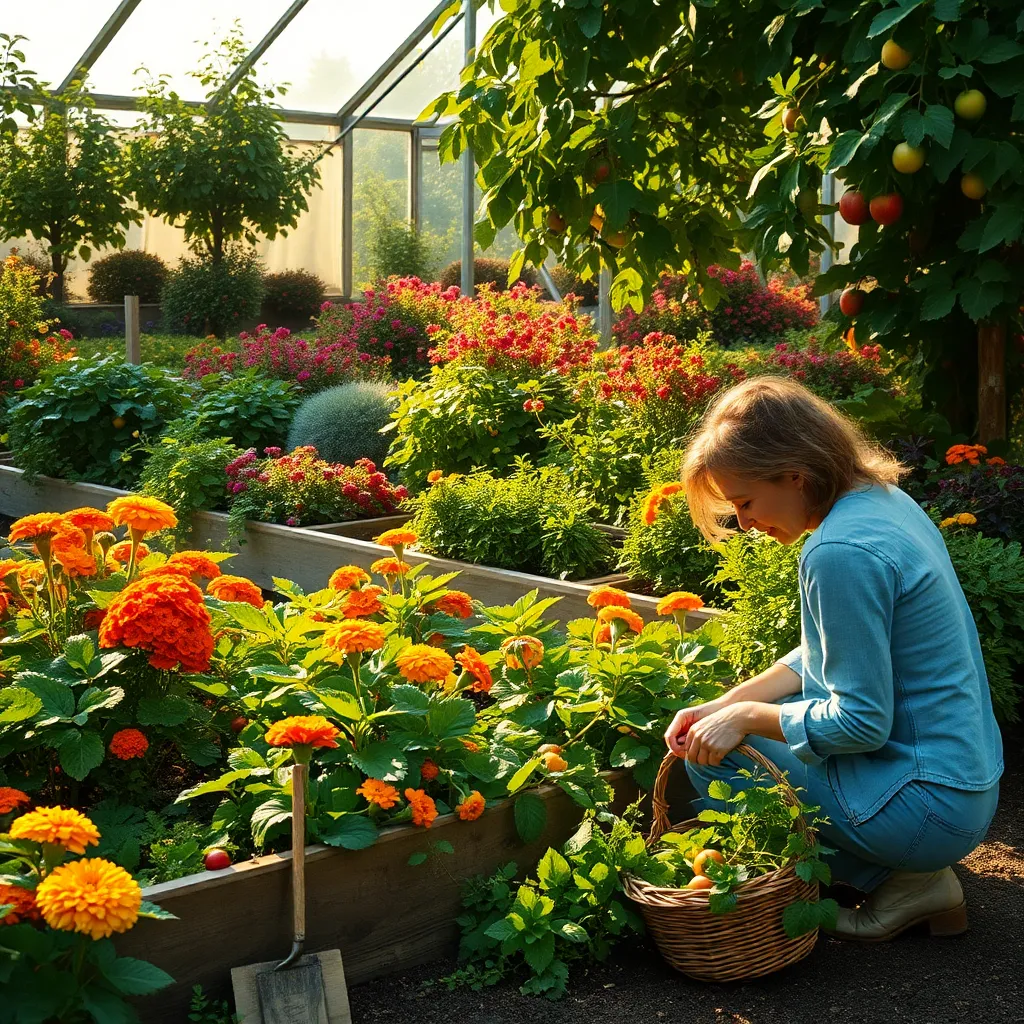
Creating a year-round harvest plan begins with understanding your local climate and growing conditions. Research the average frost dates for your area to determine the best planting and harvesting times for different fruit varieties.
Choose a mix of fruit trees and bushes that have different harvest periods to ensure a continuous supply. For instance, start with strawberries in the spring, followed by raspberries in the summer, and finish with apples in the fall.
It’s crucial to select fruit varieties that thrive in your specific soil type. Conduct a soil test to determine if your soil is sandy, loamy, or clayey, and amend it if necessary to suit the needs of your chosen plants.
Implementing succession planting techniques can also extend your harvest season. Stagger planting times for some fruits, like berries, by choosing early, mid, and late-season varieties to spread out production.
Advanced gardeners might consider using cold frames or greenhouses to protect sensitive plants and extend the growing season. These structures can help maintain optimal temperatures and humidity levels, allowing for an earlier start in spring and a prolonged harvest into the fall.
Using Edible Ground Covers
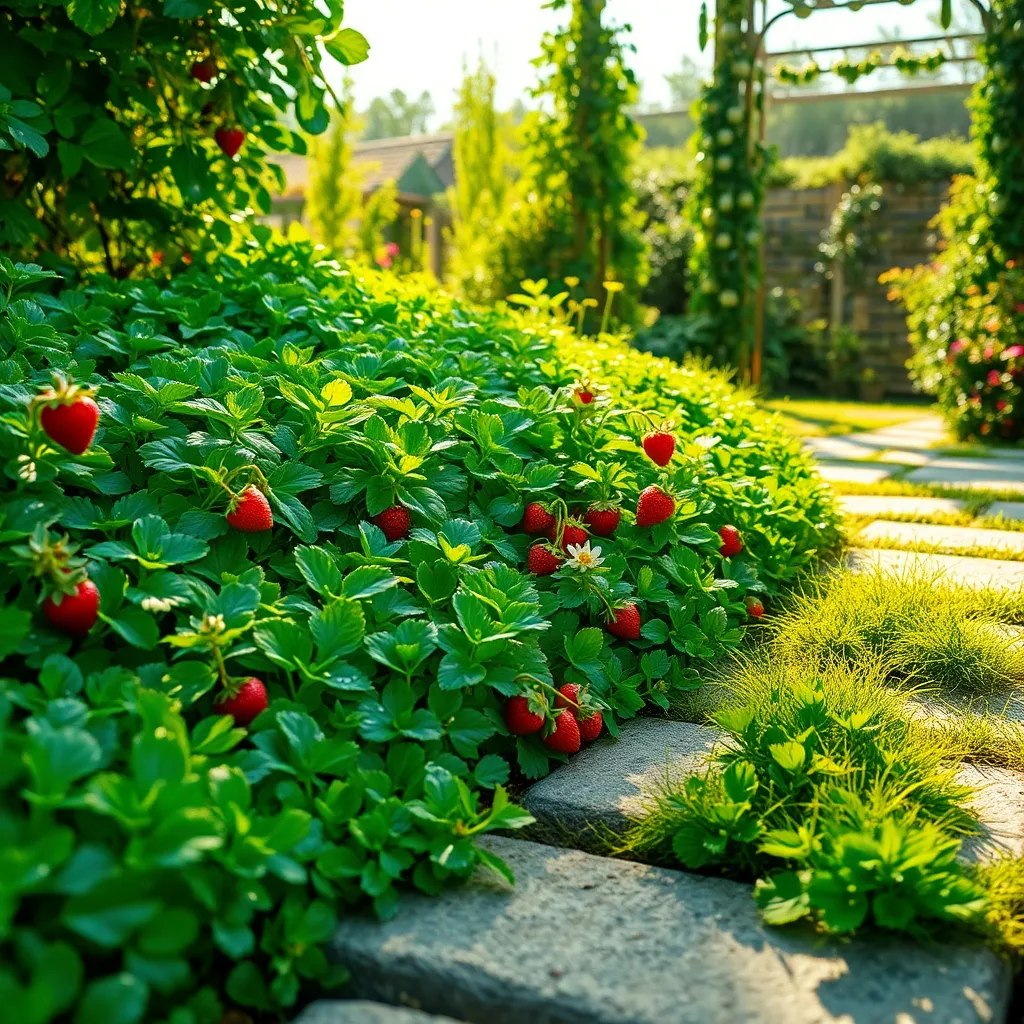
Using edible ground covers in your fruit garden can enhance its beauty while providing additional harvests. These low-growing plants help suppress weeds and retain moisture, making them a smart choice for any garden setup.
Consider planting strawberries, which not only offer delicious fruits but also thrive as ground covers. They prefer well-drained soil and full sun, requiring regular watering to ensure the soil remains consistently moist.
For a touch of greenery and flavor, try growing thyme as an edible ground cover. This hardy herb loves sunny locations and well-drained soil, and it requires minimal watering once established.
Incorporating clover can improve soil fertility, thanks to its nitrogen-fixing abilities. It’s an excellent choice for those looking to enrich their garden soil naturally while providing a lush green carpet.
Incorporating Fruits into Landscaping
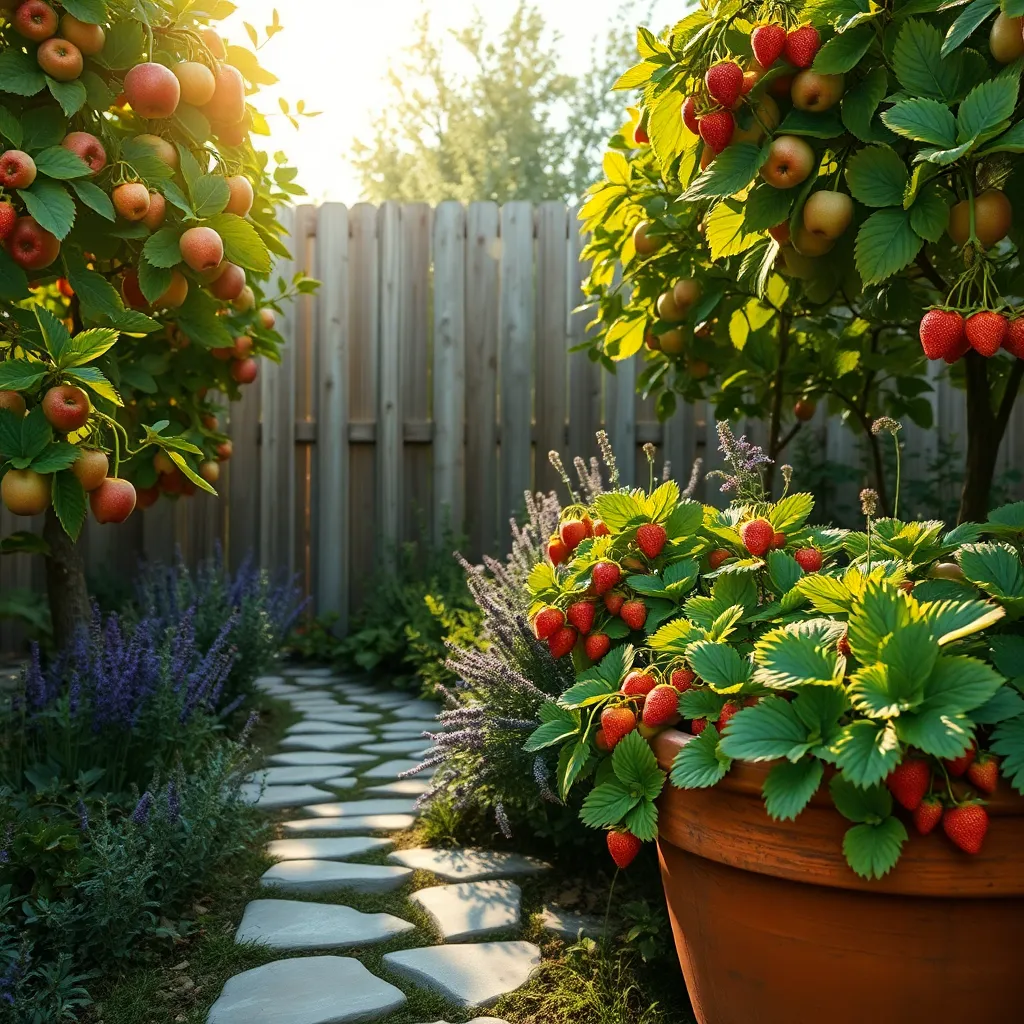
Incorporating fruits into your landscape can offer both aesthetic and practical benefits. Consider planting fruit trees such as apples or pears, which not only provide shade but also produce a bountiful harvest. Position these trees in areas with full sun and well-drained soil to ensure they thrive. Regular watering, especially during dry spells, is crucial for young trees to establish strong root systems.
For smaller spaces, dwarf fruit varieties can be an excellent choice as they require less room while still producing ample fruit. These compact trees can be used as focal points in your garden, adding visual interest and delicious yields. Ensure they are planted in loamy soil for best results, and prune them annually to maintain their shape and productivity. Fertilizing in early spring with a balanced formula will support healthy growth and fruiting.
Berry bushes like blueberries or raspberries can also be integrated into your landscape, serving as both attractive hedges and productive fruit producers. Plant them in groups along garden borders or paths for easy picking access. Blueberries thrive in acidic soil, so it’s important to test your soil and amend it with peat moss if necessary. For raspberries, ensure they have support structures such as trellises, which help manage growth and improve air circulation.
Advanced gardeners might consider espalier techniques to train fruit trees against walls or fences, maximizing space and creating unique garden features. This method is ideal for apples or pears and requires regular pruning to maintain the desired shape. Ensure your chosen wall receives plenty of sunlight, as this will enhance fruit production and overall plant health. With a little effort and creativity, incorporating fruits into your landscape can transform your garden into a beautiful and edible oasis.
Conclusion: Growing Success with These Plants
In exploring the vibrant world of fruit garden inspirations, we’ve unearthed 12 key relationship concepts that mirror the nurturing nature of a thriving garden. From the foundational roots of communication and trust, to the blossoming branches of shared goals and mutual respect, each element plays a vital role in cultivating a healthy relationship. We delved into creative ways to maintain the freshness of love, like incorporating spontaneity, and emphasized the importance of patience akin to tending to growing plants. We also highlighted the balance of giving and taking, much like the symbiosis found in nature.
As an immediate next step, choose one concept that resonates most with you and initiate a meaningful conversation with your partner about how you can integrate this into your relationship. This small action can sow the seeds for deeper connection and understanding.
Remember, relationships, like gardens, need consistent care and attention. Bookmark this article to revisit these inspirations whenever you need a new perspective or a gentle reminder. By investing time and energy today, you’re paving the way for a flourishing future filled with love and harmony. Let’s cultivate the garden of your relationship together, nurturing it to its fullest potential.

